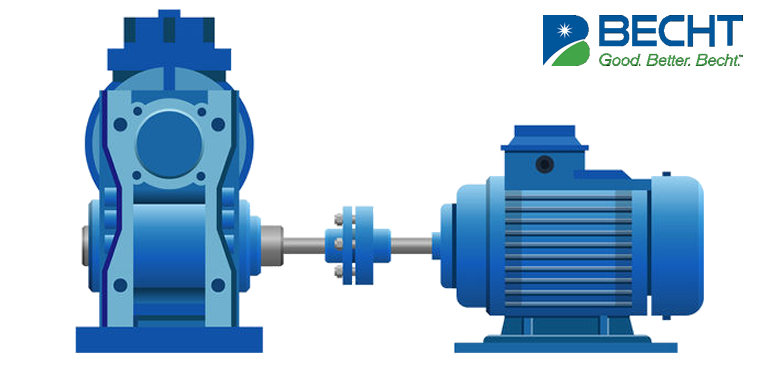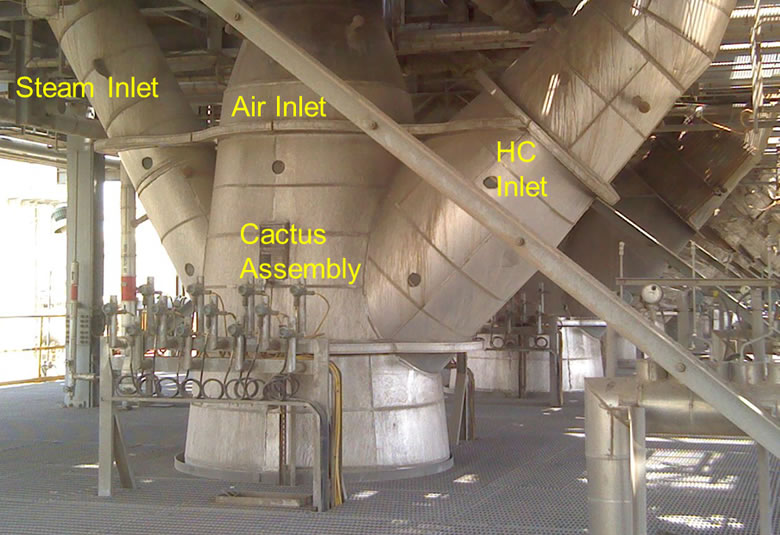Oil System Cleaning – Making Oil Flushing a Predictable Procedure
Oil system cleaning or Oil Flush has humbled many Machinery Guys. What seems like a very simple task often turns out to be to the Achilles’ heel and often unpredicted and embarrassing critical path of the machinery overhaul. The purpose of this article is to outline improvements that we have implemented to the old-fashion “Flush and Pray” procedure that will make the planning and execution of your routine oil flushes a predictable and successful part of your machinery overhaul. After finding ourselves in the “Flush and Pray” situation and trying to explain the overhaul start-up delay caused by flushing delays several times, we worked on ways to improve oil flushing procedures and effectiveness. We developed new methods and procedures to assure success in the allotted time. These new methods and procedures were used and constantly improved over time. The “Flush and Pray” procedure has been replaced with improved methods and procedures that have been consistently successful on many projects.
The Historic Oil Flush Procedure:
Oil system cleaning is performed during machinery overhauls with the objective and planned duration that allow time to clean the entire oil system. Typically, the used oil was removed from the reservoir, coolers, filters and piping. The reservoir and filter housings were cleaned. New filters were installed. Jump over or bypass oil piping was installed to bypass the bearing, seals and gearboxes. All regulators and instrumentation were blocked in and bypassed to prevent damage during the flushing. The oil reservoir was then charged with new oil. The oil pump was started and the oil was circulated through the oil system to clean out the system. Sound familiar? There have been many variations and iterations in these original flushing procedures. But the one common feature of these methods was that it was impossible to predict how long the process would take. And the economic impact of an unplanned, delayed start-up of a critical machine was very difficult to explain to management. Rather than reviewing the history of oil flushing, we will review what innovations have been developed to assure a successful, and timely oil flush.
Improvements in Oil Flow:
High and turbulent oil flow is one of the keys to success. Listed below are some of the proven methods to accomplish this.
Eliminate restrictions in the flush system. Use hydraulic hoses with the minimum diameter of the oil supply piping for jump over or bypass hoses.
Install 1/4 turn valves on each jump over or bypass line to facilitate flushing one line or one system at a time to increase the flow.
The pumps used for oil flushing should be higher capacity than the original pumps to increase the flow. If this is not possible, the jump over or bypass valves can be used to flush one line or system at a time to increase flow. This will increase the time required to complete the flushing. Companies that specialize in oil system cleaning normally supply their own high capacity pumps. High flow Air Operated Diaphragm Pumps (AODP), for example, work great in this application. Not only does the AODP supply the flow required, the oil is pulsating which causes turbulence in the flush system. The AODP can be obtained without the expense of using companies that specialize in oil system cleaning.
Nitrogen injection is used to produce turbulence in the flushing oil. Appropriate Nitrogen SAFETY PROCEDURES must be planned, effectively supervised and carefully followed. The nitrogen injection point should be downstream of the filters and instrumentation that could be damaged by the turbulence. The nitrogen must be filtered before it is injected. The nitrogen should be injected ONLY when the flush oil is circulating. Only a small amount of nitrogen being injected in to the oil flush stream will cause the oil piping and bypass hoses to vibrate violently. Often the nitrogen injection is performed when the repair personnel are not present. If managed properly, the nitrogen injection is well worth the effort. We use the nitrogen injection only when the oil system is configured such that the pulsation from the AODP are attenuated.
Improvements in the Oil as a Flush Medium:
Originally, the same oil that was used during operation was used as flush oil. Listed below are some of the proven methods to accomplish this. Lighter weight oil is preferred for flushing. If the normal oil is 30W oil you would use a 20W or 10W to flush. Cleaning or detergent oil additives specially designed for oil system cleaning should be added to the flush oil. One example is Mobil System Cleaner. This detergent should be added to the flush oil according to the manufacturer’s instructions.
When using lighter oils and detergents in the oil flush, it is very important to be sure to remove all the flush oil from the system before filling the system with the operating oil.
Improvements in Procedures:
In the typical procedure the flush oil was heated and circulated until deemed “clean.” But in the final step of the procedure, the jump over hoses were removed, and the oil piping was reinstalled with 100 mesh screens installed in the supply lines to all the bearings or seals. The oil was circulated for a given time, then shutdown, and the screens were removed and inspected. Most of the time, I recall 100% of the time, the screens contained an unacceptable amount of foreign particulate. The screens were reinstalled and oil circulation resumed. This was repeated until the screens contained an acceptable amount of foreign material. AND IT WAS IMPOSSIBLE TO FORECAST HOW LONG THIS FINAL STEP TO “CLEAN” WOULD TAKE. But why would an oil system that had been deemed “CLEAN” following the oil flush now be considered “UNACCEPTABLE”? The only changes were: removing the flush hoses and installing the already clean oil pipe. The flow rate was much less due to the orifice effect of the bearings or seals. In our experience the BIG change was the temperature cycling of the oil system. Listed below are some of the proven methods to take advantage of this important factor, along with several other important procedural details necessary to achieve a successful and predictable cleaning.
Cycling the flush oil system temperature is THE key to success. The flush oil should be heated and circulated until the most remote oil flush piping skin temperature is at or near the temperature of the flush oil. While circulating, the flush oil should then be cooled and circulated until the flush oil and the most remote oil flush piping skin temperature is at or near the limitation of the oil cooling system. The heating and cooling cycle should be repeated until the flush oil cleanliness is deemed acceptable.
Heating the flush oil MUST be done with caution and safety in mind. Flush oil is normally heated to a minimum of 150°F and to maximum of 180°F. Personnel protection must be considered for those working around the hot flush oil piping and all personnel must be aware of the possibility of hot oil leaks.
Heating and cooling the flush oil can and has been achieved with the normal oil system coolers, but the procedure for using this equipment in an unusual manner must be carefully planned and implemented consistent with an organization’s Management of Change procedures.
Cleanliness is a MUST in oil systems. Be sure that any item used in the oil flushing process is very clean. Piping gaskets have become a cleanliness problem since the spiral wound carbon filled gaskets have become the gasket of choice. The carbon flakes get into the oil system and appear as foreign objects on the oil test screens, not to mention that carbon flakes may cause damage to the bearings or seals. We have had great success using class G4433 gaskets to maintain cleanliness.
The goal of oil flushing is to achieve a clean oil system in the allotted time. The procedures outlined above have been consistently successful in achieving those objectives. We have many years of planning and executing oil system cleaning. We also have more information on planning and executing machinery overhauls. Please let us know if we can help you improve your oil flush procedure and/or predictability, or other machinery overhaul challenge. We are always ready to HELP with any Machinery problem. Let our 100+ years of experience work for YOU! ~ The Becht Guys!
[readon2 url=”index.php?option=com_rsform&view=rsform&formId=4&Itemid=620″]Click to Request Info[/readon2]







Can you please tell me what are the potential risks that can occur before, during and/or after the process? How do you mitigate such risks?
Do you know of any companies that perform this type of work. If so, can you recommend any?
Thank you.
Evelyn
Sorry for taking so long to respond. I had some health issues that postponed my response. The risk associated with not cleaning the entire oil system during a major outage far outweighs the risk of the hot oil flush. The major risk is having hot oil circulating in the same area that people are working. This can be mitigate by using the hydraulic hoses which are threaded and connected to the correct rated flanges. The oil piping and hoses should be insulated where required for personnel protection. The flush circulation is started with low pressure and cool oil to check for leaks, the pressure is increased slow constantly checking for leaks. After the circulating system is at full flow and pressure the oil is then heated while checking for leaks. All out he normal safety precautions should be used when installing and checking test screens (lockout tagout and depressurize).
To answer the question as to what companies perform oil system cleaning, there are many companies that do this type of system cleaning. I have work mostly with COT Puritech. None of the system cleaning companies uses all of the methods I described in this article. Most of those companies just flush hot oil until the system appears clean. I highly recommend using all of the methods in the article to assure success. Most of the system cleaning companies will be open to your request on how you would like the flushing to be performed. You should get the selected company involved early in the planning stages to assure they can perform the work as you request. We at Becht can help you with your flushing design (where to install flush hoses, what size hoses, what pumps or what cleaning company to use). We have also developed flush plans and supplied overseeing of the flushing.
I hope I have answered all of your questions. If not feel free to contact us again.